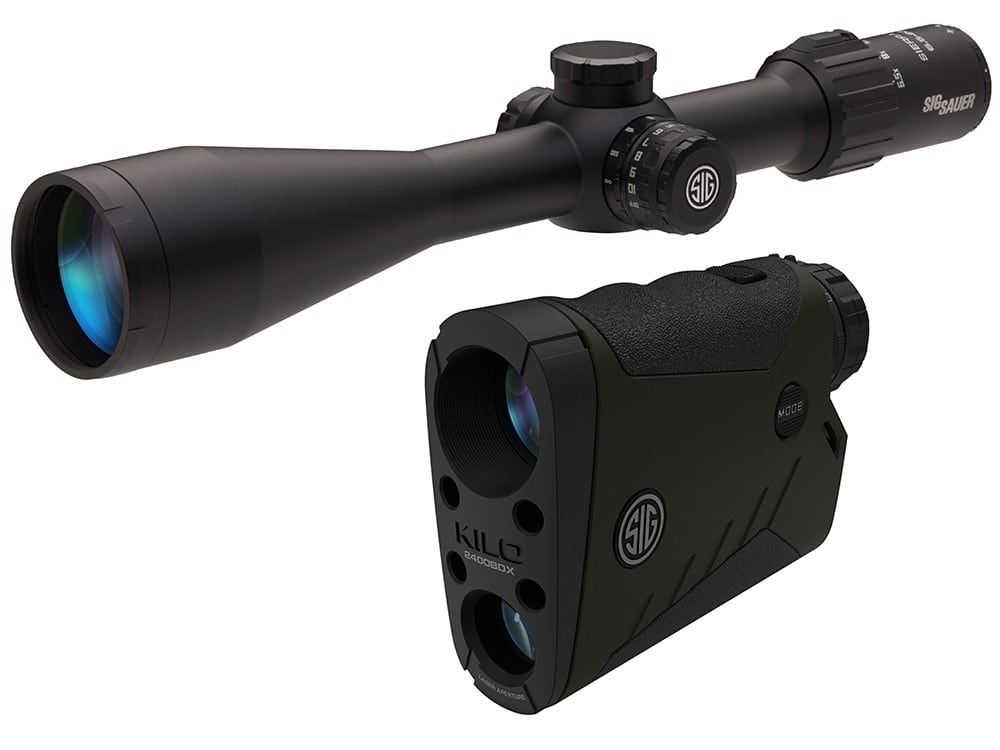LAS VEGAS — An electro-optics targeting system released last year by Sig Sauer has many of the elements that Army, Marine and special operations forces are looking to have in their long-range and advanced optics.
The BDX, or Ballistic Data Xchange, system was on display this week at the company’s range day during the annual Shooting, Hunting and Outdoor Trade Show here.
The system allows shooters a way to adjust their aim point inside the scope with the use of an external range finder and smartphone application. A shooter can work with a spotter who uses the range finder and makes the adjustment or can use the range finder themselves before settling in behind the scope.
RELATED

They can also program multiple ranges, providing quick-response shooting to short-, medium- and long-distance shots up to 800 yards. An additional piece of software that would enhance that to military standards lets shooters go past 800 yards by factoring in “environmentals” such as the curve of the earth.
That was in part to comply with some state hunting laws that prevent combination scopes and range finders, said a company official.
But, Sig is working on an integrated range finder that would remove the need for Bluetooth connectivity. The new combo would put the range finder in line with the scope on the weapon and could be ready in the next six months, said Andy York, Sig’s president of optics.
Currently, the Army is at work on a combination of optics advances. Some of those advances are part of the Army’s search for the Next Generation Squad Weapon, aimed to replace the M16/M4 platform over the next two to three years.
Advances in thermal capabilities, data display and weapons-mounted cameras are expected to flow into the fire control system as the weapon advances, Army officials have said.
In the meantime, there are three basic requirements for companies that compete for the new weapon and are expected to have three fire control capabilities built into one device — a laser range finder, ballistic computer and disturbed reticle.
Though not in current competition for the optic, for which the Army is set to post a final prototype notice by the end of January, York said the work Sig has already done with the civilian BDX gives the company a head start in delivering the capabilities and could be an interim solution for advancing sniper capabilities.
Sig has had a number of recent successes, having won the lucrative contract to replace the decades-old standard issue Beretta M9 pistol with the Sig M17 and M18 standard and compact-sized 9mm pistols.
The company also won Special Operations Command’s search for a concealable personal defense weapon with swappable upper receivers for options in both 5.56mm and .300 Blackout with its MCX Rattler.
Todd South has written about crime, courts, government and the military for multiple publications since 2004 and was named a 2014 Pulitzer finalist for a co-written project on witness intimidation. Todd is a Marine veteran of the Iraq War.





